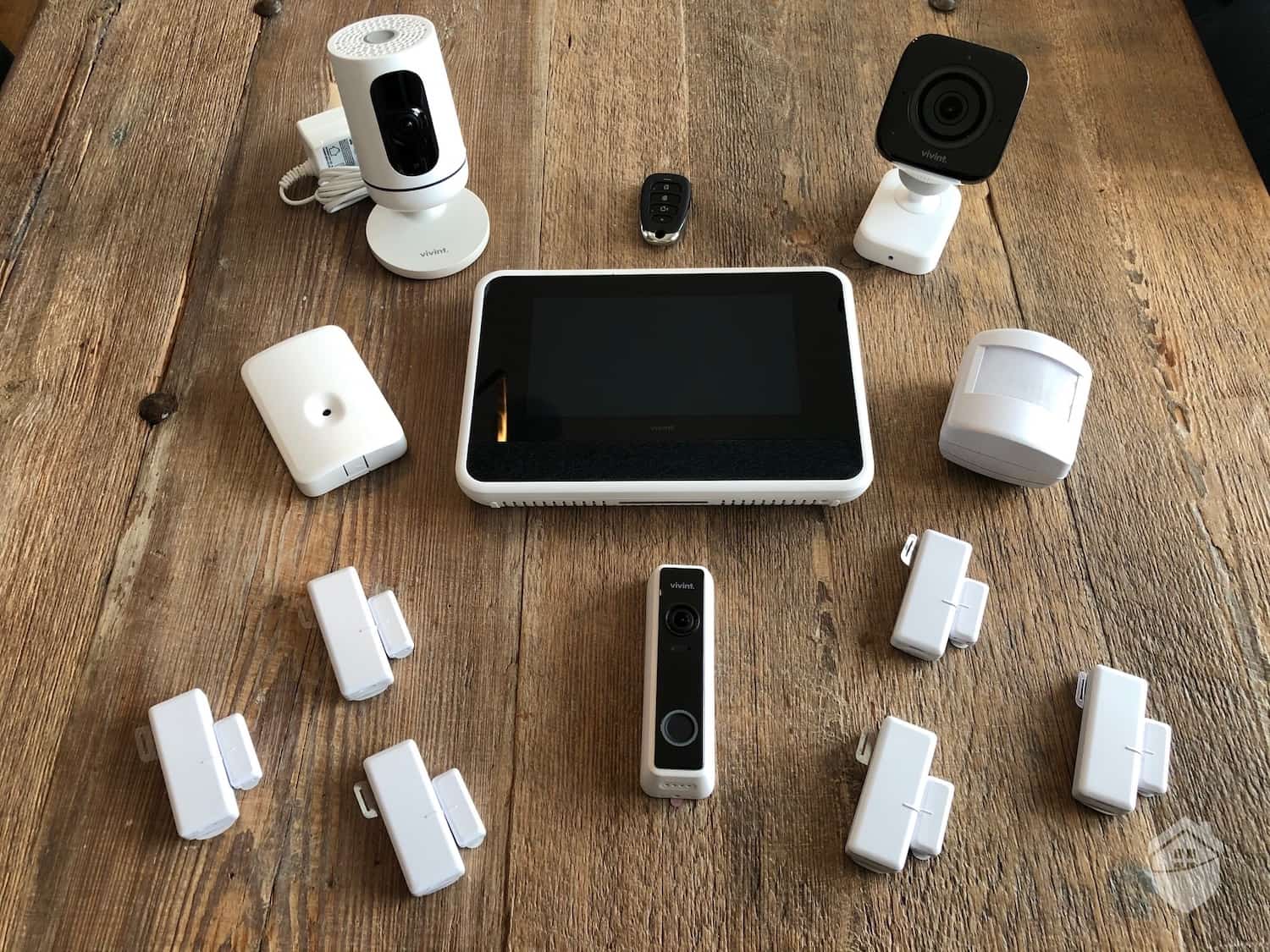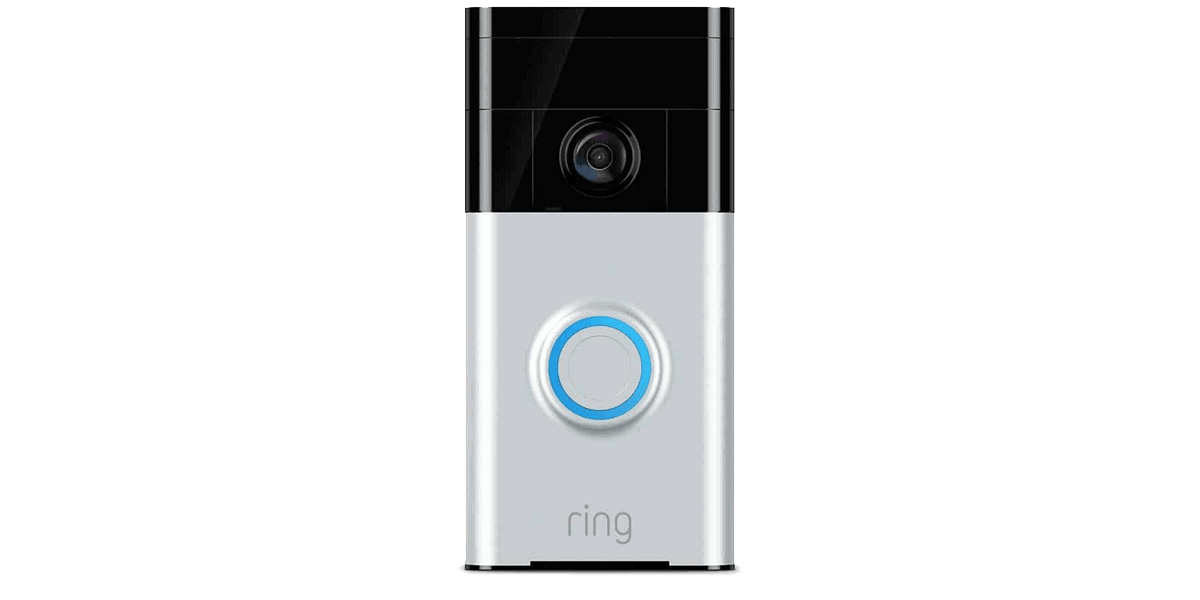How to Choose a Home Security System
You’ve worked hard to build the life that you have, and it’s understandable that you want to protect it from those who would do you harm. In America, a home is burglarized every 15 seconds. That’s an average of nearly 5,000 break-ins a day. If you don’t want to be part of that statistic, it’s important to invest in the best home security system that matches your preferences.
Did You Know? Burglars like to break in during business hours, when they think their target will be at work. Robberies occur at a 6 percent higher rate between the hours of 6:00 a.m. and 6:00 p.m.
That said, there are a multitude of products and services on the market that claim to help increase your safety. Finding the right home security system doesn’t have to be daunting, but it’s not a process to take lightly.
So before you start picking out motion sensors and security cameras, it’s important to understand how each component will work in concert with the system as a whole. In this guide, we’re going to share everything you need to know to choose the right home security system.
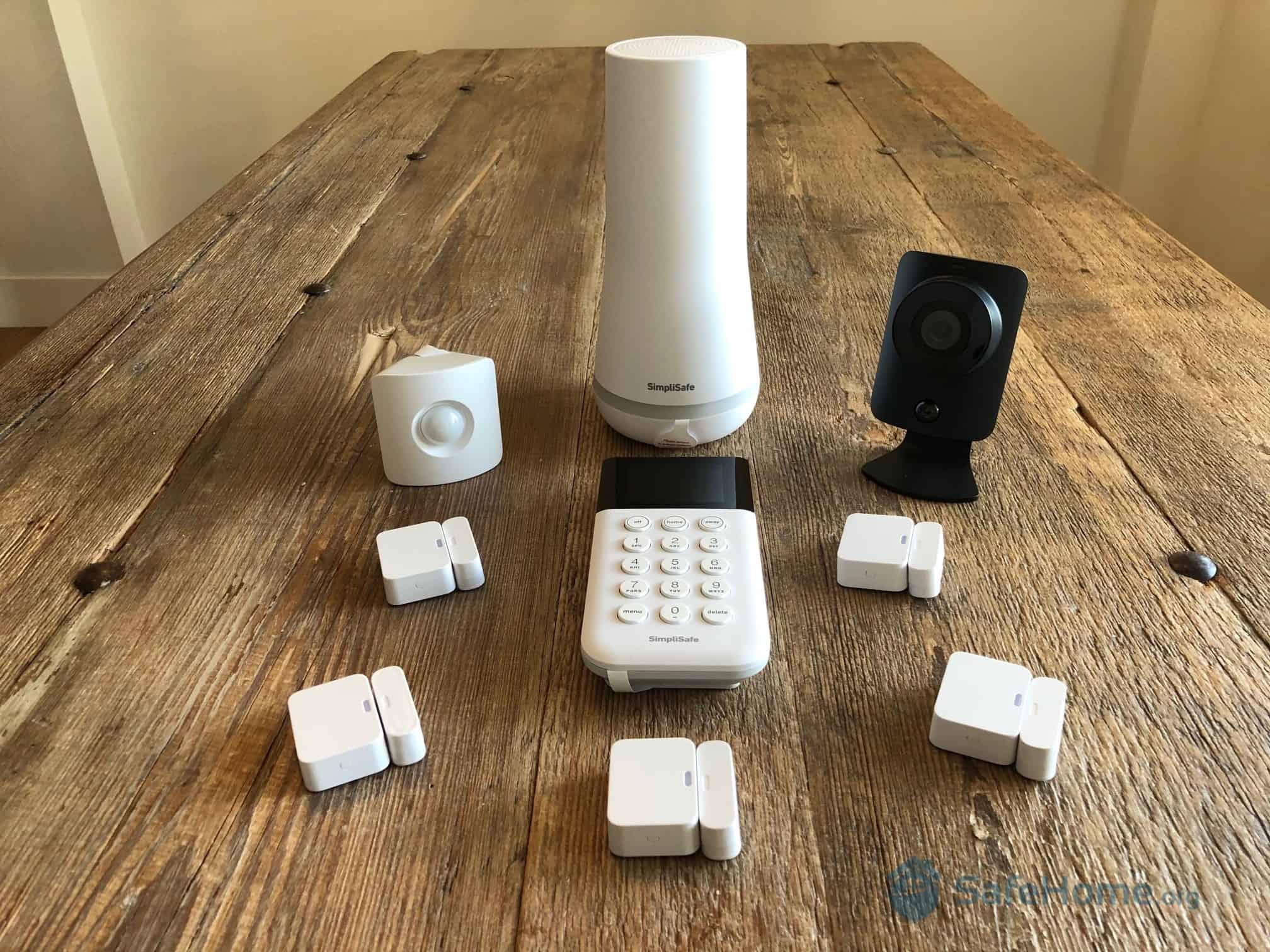
SimpliSafe Equipment
Are you in the market for a home security system? Please answer this survey to help us better understand consumer shopping habits. View Survey.
The Elements of a Home Security System
When we talk about home security systems, we’re talking about combinations of hardware devices and monitoring services. Generally speaking, you’ll be paying your home security system provider for two things: the hardware that will detect intruders and other threats, and the monitoring services that will trigger calls to the authorities when your system detects a threat. You’ll pay for the former once and the latter on a month-to-month basis. However, you can also buy a self-monitored system and avoid monthly fees altogether.
But before pulling out your credit card and jumping on the latest deal, you should keep your biggest needs in mind when choosing the best system for your home.
So it’s best to start with these questions: Do you have a huge wooded backyard where prowlers might be lurking? You’ll probably need motion sensors and lights, as well as weatherproof outdoor cameras for video surveillance. Do you live in a ground-floor apartment with windows facing the street? You’ll need glass-breakage alarms and loud sirens. Do you regularly purchase items that are delivered to your home? Consider a video doorbell that will record porch pirates.
Did you know: A recent study found that nearly 30 percent of all online shoppers have had at least one package stolen.
With that in mind, this hardware can detect threats in and around your home, but that doesn’t do you much good unless you have some way for those sensors to alert you and, more importantly, the authorities.
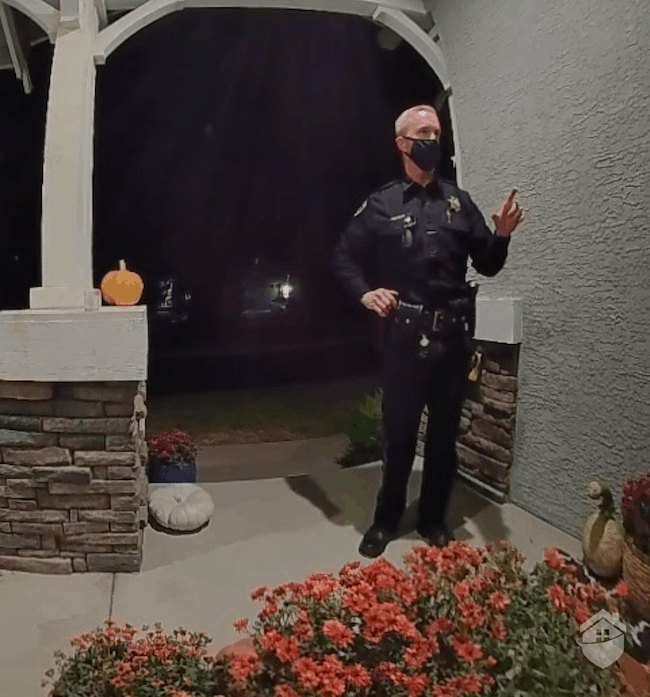
Police Officer checking up on us thanks to Cove Monitoring
We’ll talk more about monitoring services in a minute, but let’s first take a closer look at the hardware that you might see in a typical home security system.
Entry Sensors
What they do: Entry sensors are a staple of any comprehensive security system. These detect when doors or windows are opened and can be programmed to alert you under a variety of different conditions.
How they work: Many of these small contact sensors come with adhesive backing for easy DIY mounting. And the vast majority of entry sensors use magnets to detect when windows or doors are open. When the magnets separate, the siren sounds and an alert is triggered.
What they’re good for: Peace of mind. It’s a relief knowing that unauthorized entry into your home via windows or doors will automatically alert you or the authorities, especially when you’re away at work or on vacation.
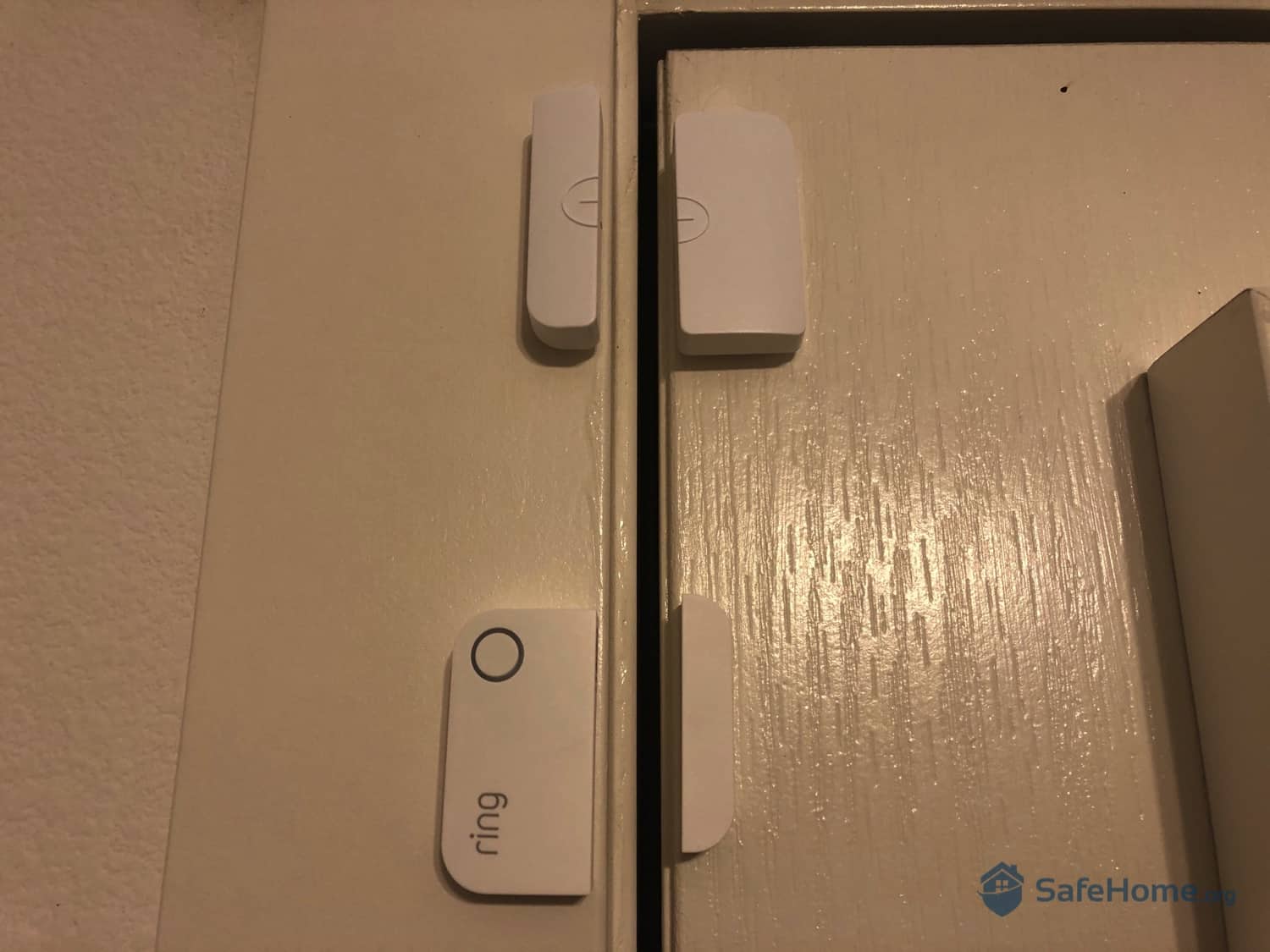
Alder and Ring Entry Sensors
Motion Sensors
What they do: Generally speaking, motion sensors sound an alarm and trigger mobile alerts that are sent to your phone when motion is detected inside of your home.
How they work: These devices use lasers or infrared light. When the field or beam is broken, they’ll be tripped. Some of the most high-tech sensors can differentiate between people and animals, and can even detect body heat.
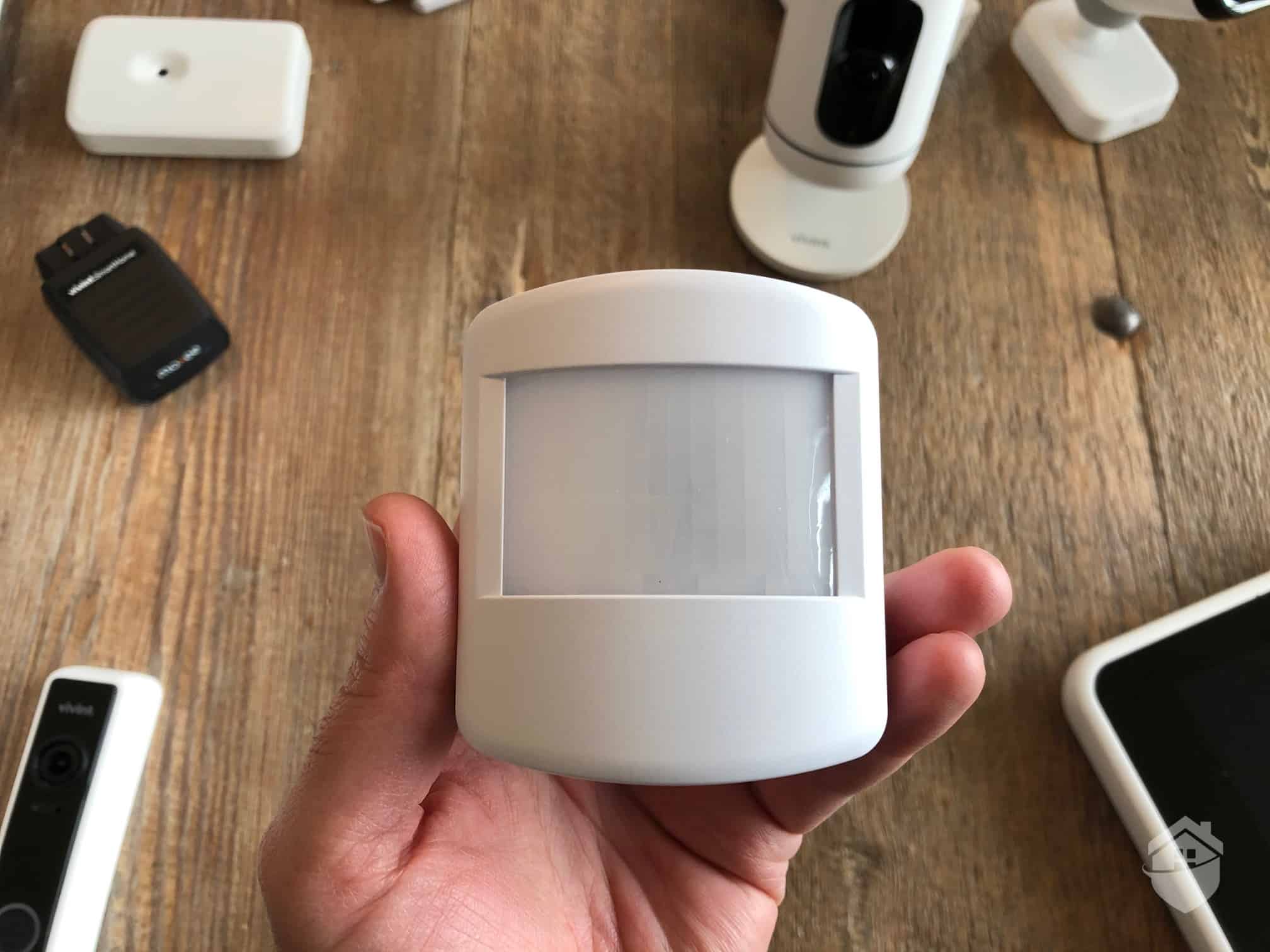
Vivint Motion Sensor
What they’re good for: Additional layers of security. Motion sensors aren’t your primary line of defense, but they can help make a decent home security system even more powerful. We like to set our system to “away mode” when leaving town. This way, the motion sensors are activated, and the inside of our home is protected.
Pro Tip: Motion sensors are a great additional layer of security, but be careful if you have children, pets, or roommates. You don’t want your motion detectors constantly being tripped for no reason. Learn more about these devices in our motion sensors buyers guide.
Sirens and Alarms
What they do: A good siren will draw attention to your home should an unwanted visitor make an appearance. Sometimes these are loud alarms (100+ dB), and sometimes authoritative voices will sound off. Every alarm system will have a siren, typically built into the control keypad or as a separate device, and you can also find home security cameras with sirens.
How they work: Sirens work as active deterrents. Sirens and alarms should integrate with your other sensors and be programmed to detect suspicious activity. Most security systems can be programmed to work on a schedule and be armed at certain times of the day.
What they’re good for: Alerting you to an intruder's presence, and scaring that intruder off. Unfortunately, the police usually can’t immediately respond to a burglary — most break-ins are over in minutes, if not seconds — but a loud alarm is usually enough to deter most criminals.
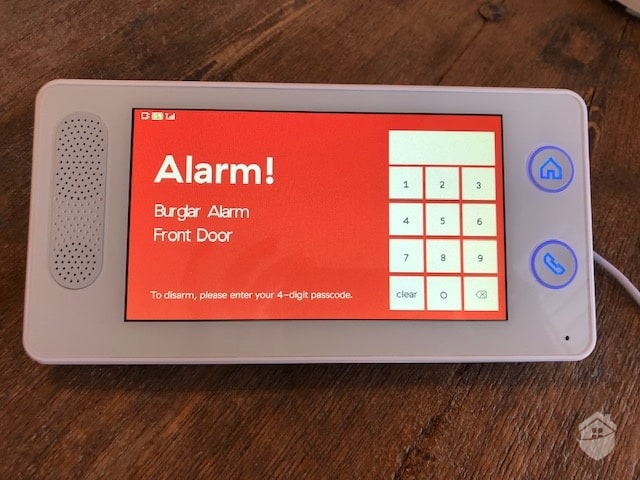
Cove Alarm
Security Cameras
What they do: Security cameras can be mounted both indoors and outdoors to keep an eye on your property when you can’t. The best security cameras constantly record footage and back it up to the cloud through your monitoring provider so that it can be viewed later if a crime has taken place. You can self-monitor other cameras using a mobile app.
How they work: Security cameras record either constantly or only when triggered by motion. That said, there are a wide variety of cameras out there. Some are better for recording at night. Some have huge fields of vision. Some come with sirens, and most have two-way talk. Modern security cameras even use artificial intelligence to distinguish humans from other moving objects, or even to detect familiar faces. However, the higher-end cameras can get a little pricey, so it’s important to understand your needs before shopping for a security camera.
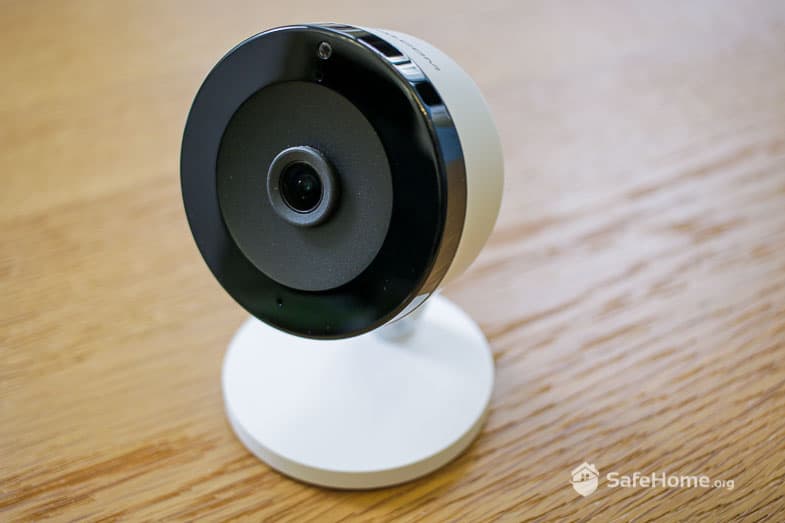
Frontpoint – Indoor Camera
What they’re good for: Security cams are an effective deterrent, and the footage can sometimes be used as evidence. While a security camera isn’t as overt as an alarm going off when a door is kicked in, criminals will often notice them and pick a different property to burglarize. If the crook is still clueless enough to break in despite the presence of security cameras, though, the police may have enough evidence to find them. If you need some help shopping, check out our security camera buying guide.
Pro Tip: Not all security cameras are created equal. For the best protection, you’ll want equipment that records in high definition with some sort of night-vision functionality. You don’t want security cameras that work only half the time.
Video Doorbells
What they do: Video doorbells have come a long way in the past couple of years. The higher-end models will record visitors and allow for two-way communication, and some of the best ones will even alert authorities if a panic button in the associated mobile app is pressed. We’ve tested tons of these, and if you want to learn more about our favorite, check out our Ring Video Doorbell review.
How they work: Video doorbells are either battery-powered or hardwired into your home’s electrical system. They replace the need for a traditional doorbell and integrate with your phone for management. They’re one of the few pieces of hardware that you’ll enjoy using on a day-to-day basis, as their function extends beyond security. You can learn everything there is to know about these great pieces of hardware with our doorbell camera buying guide.
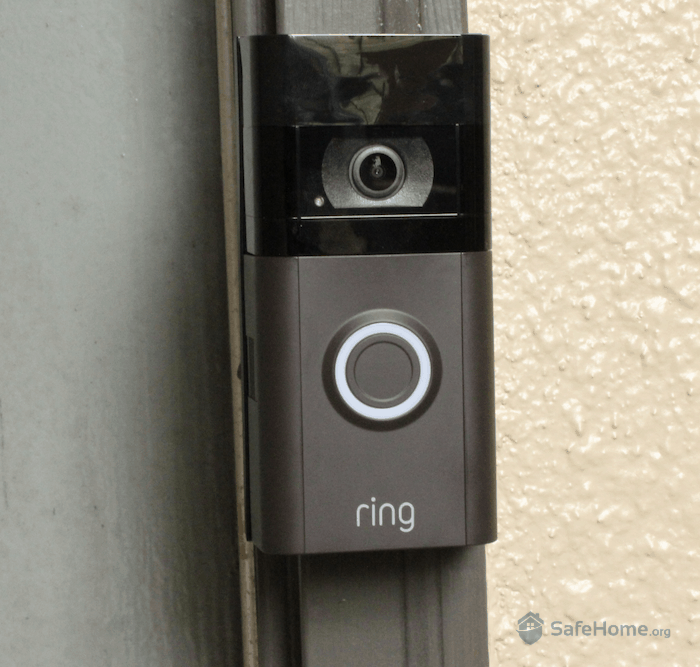
Ring Video Doorbell 3, Installed
What they’re good for: Entryway management and protecting against porch pirates. As stated above, video doorbells have a wide range of functionality beyond protecting your property, but they’re really good at deterring people from stealing your packages. And — similar to other security cameras — they’re great for providing evidence to authorities if a crime does take place.
Floodlights
What they do: Most floodlights are motion activated and shine a brilliant light on movement in the darkness. Maybe it’s a raccoon, but it could also be someone sneaking onto your property using the cover of darkness. You can learn more about two of the best in our analysis of the Ring Floodlight Camera and our review of the Ring Spotlight Camera.
How they work: If movement is detected, the floodlight will activate and light up the night. When placed strategically around your property, floodlights will make it so there’s nowhere to hide. And burglars hate to be seen.
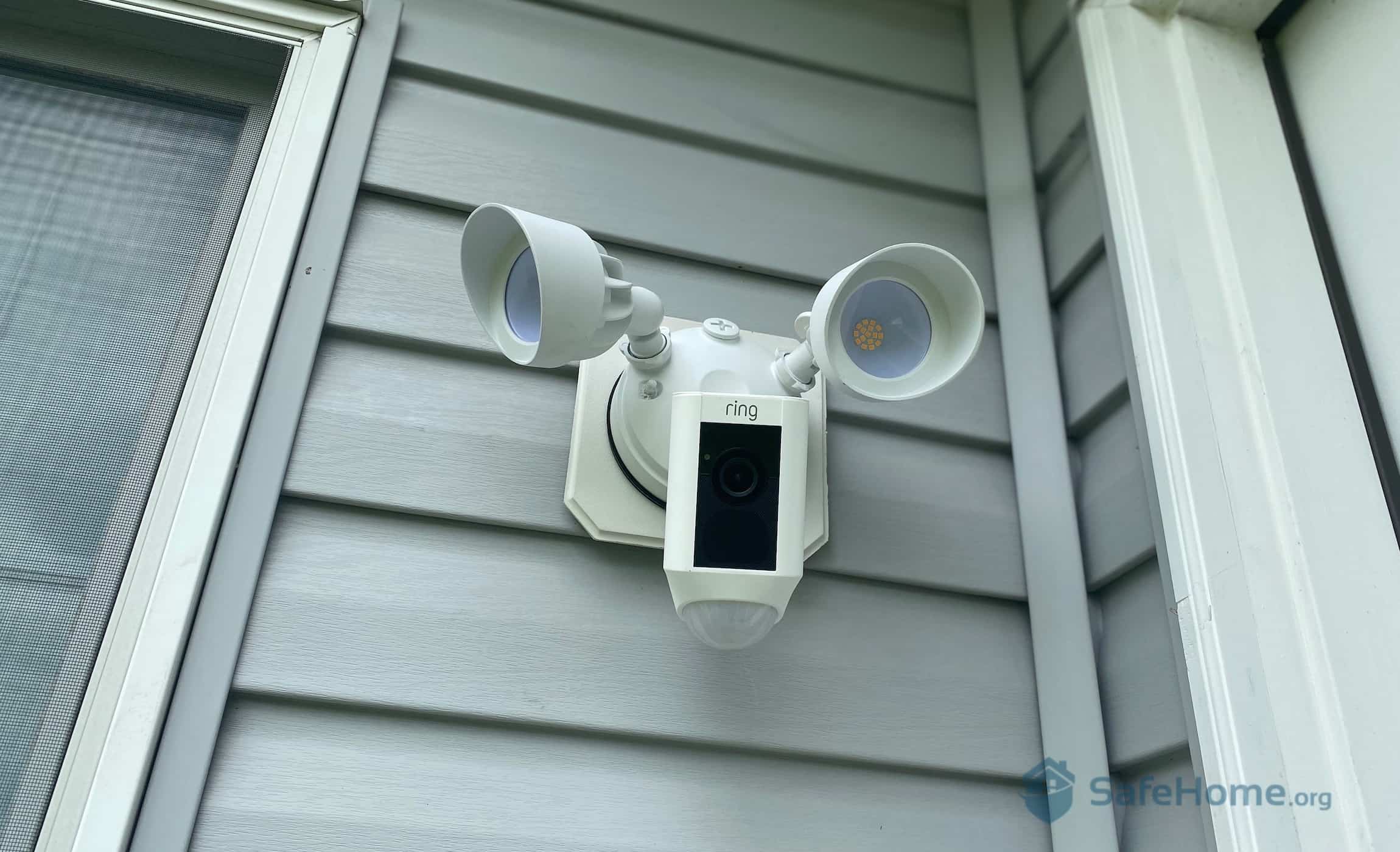
Ring Floodlight Cam Mounted Outside
What they’re good for: Deterrence. A lot of criminals prefer to sneak around in the dark. If they’re suddenly lit up like the Las Vegas Strip, they’re likely to run.
Pro Tip: If you have a lot of land, it’s not essential that your floodlights cover every square inch of your property. Instead, focus on access points as well as any areas where visibility might be obscured.
Atmospheric and Environmental Sensors
What they do: Not all threats to your property and safety are physical. Sometimes your environment can become dangerous without your knowledge. These sensors will alert you if there is a carbon monoxide leak, if they detect smoke, if flooding occurs, or if other environmental threats are recognized.
How they work: These sensors are calibrated to detect specific compounds or changes in your home’s atmosphere. They can be integrated into an overall security system or purchased as stand-alone devices.
What they’re good for: Keeping you alive and safe. Carbon monoxide and smoke should not be taken lightly. Not to be dramatic, but these elements can kill very quickly if you’re not alerted to their presence. No home security system is complete without environmental sensors. If you’re interested, read about Frontpoint’s home security system, and check out our review of Vivint smart home security. Both have great environmental monitoring capabilities.
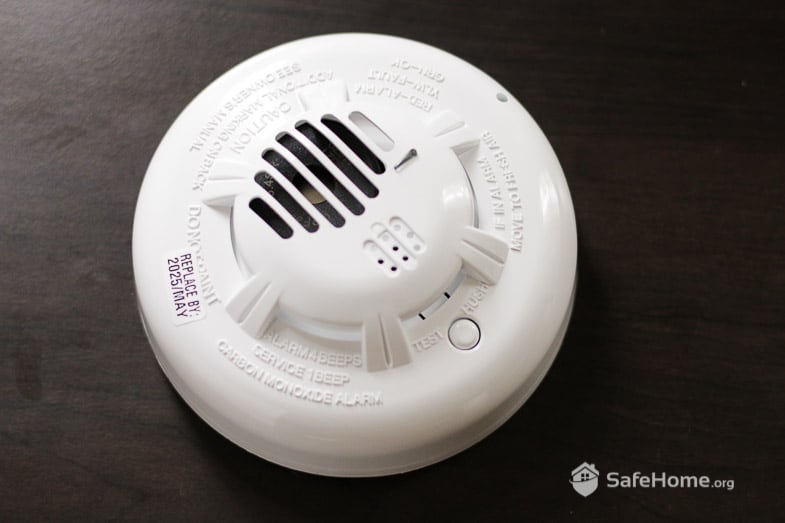
Alder Smoke Sensor
Glass-Breakage Sensors
What they do: Sometimes thieves won’t bother with trying to shim a window open or pick a lock. Smash-and-grab criminals will instead bust out a window, hoping to get in and out of your property fast enough that they won’t be caught. Glass-breakage sensors will sound an alarm when a window breaks, deterring the criminal immediately and/or alerting authorities. ADT’s hardware is some of the best in the industry, and if you’re looking for the total package, read our analysis of ADT’s overall security offerings.
How they work: These sensors rely on tiny microphones that detect the high-frequency sound of glass breaking. Once they’ve been triggered, they sound an alarm and/or immediately alert authorities, depending on how they’re monitored.
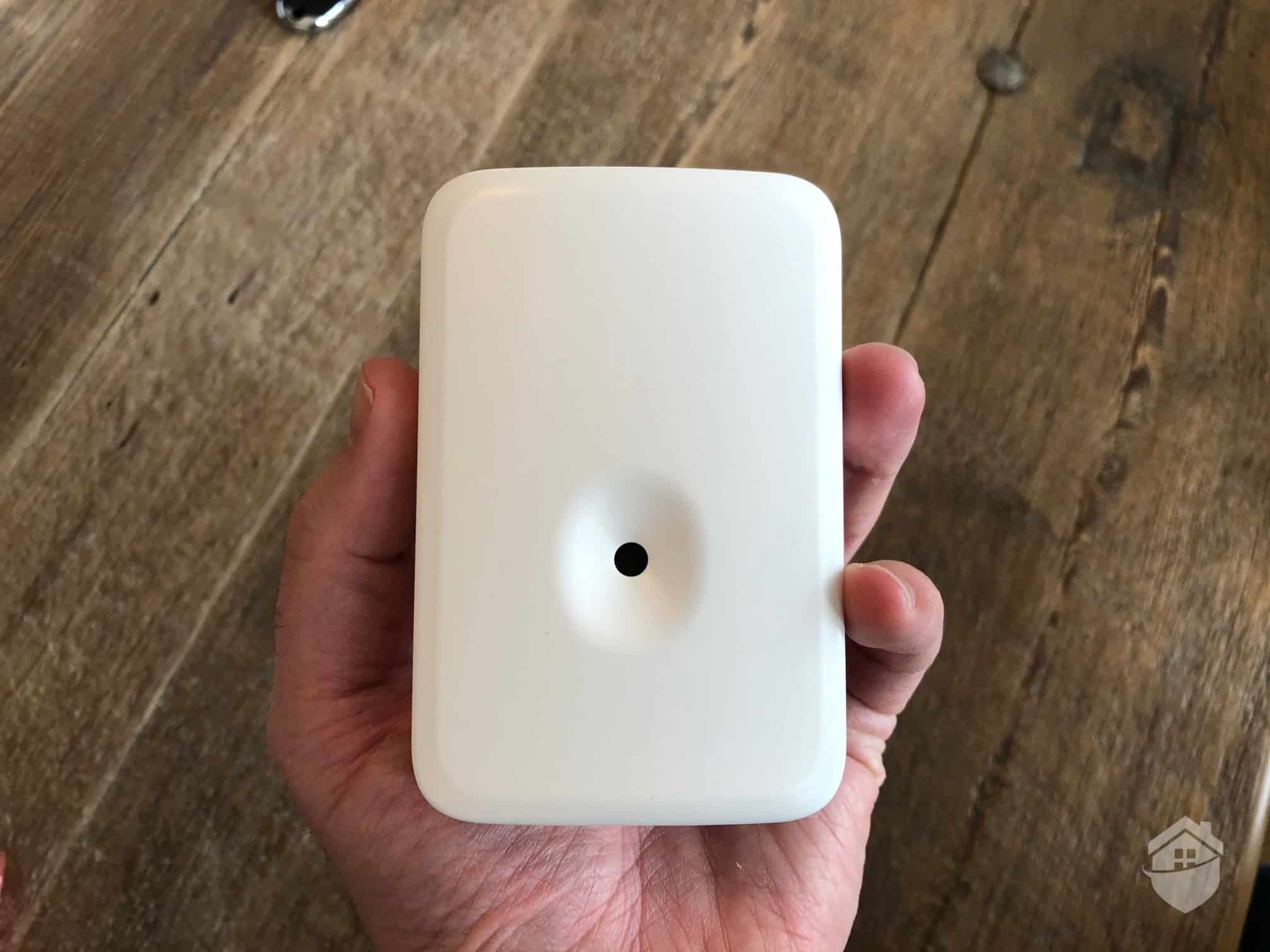
Vivint Glass Break Sensor
What they’re good for: Preventing smash-and-grab burglaries. If a criminal breaks your window, they’re likely trying to get in and out quickly. If an alarm sounds, they’re less likely to want to stick around. To safeguard your home, use these sensors in addition to entryway and motion sensors.
Panic Buttons
What they do: These wall-mounted or neck pendant devices immediately connect you to assistance, whether that is paramedics, the fire department, or police.
How they work: Most panic buttons have different options for different types of emergencies and are directly connected to your service provider. Once the button is activated — usually holding it down for a few seconds to prevent false alarms — help will be dispatched immediately.
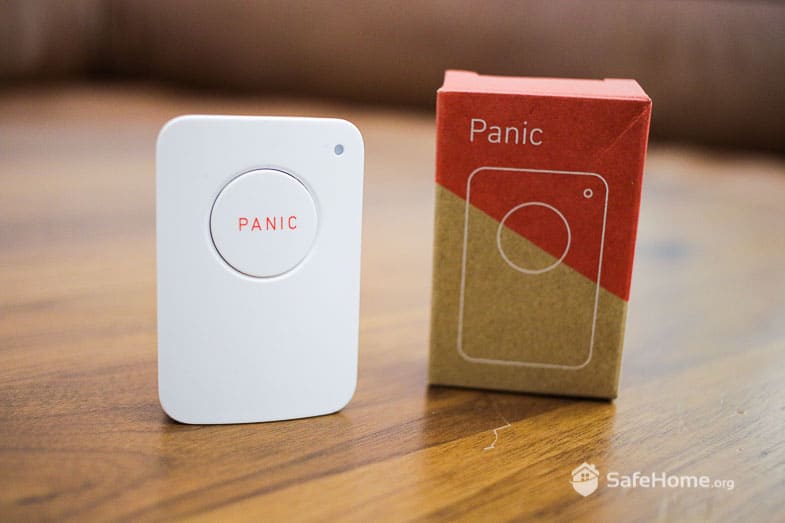
SimpliSafe – Panic Button
What they’re good for: Protection and peace of mind. Of all of the hardware on this list, panic buttons are the most underrated. They will immediately connect you with the help you need if there’s a life-threatening situation.
Pro Tip: If you're concerned that you might not be able to get to your panic button in time, several providers offer wearable devices. These are great for seniors or others who might become immobilized by a medical emergency. For more information on these life-saving devices, check out our guide to the best medical alert systems.
Now that you have an understanding of the different elements of a home security system, it’s time to decide which pieces of hardware make the most sense for your living situation.
If you live in an apartment, you probably won’t have much use for floodlights, and if there’s a lot of activity going on at your place throughout the day, motion sensors might not be right for you either. There’s no one-size-fits-all approach, so being strategic is important.
Tailoring Your System to Your Home
Understanding the way your home is set up and knowing your vulnerabilities are two of the most important concerns when setting up a comprehensive home security system. You don’t really need glass-breakage sensors on second-story windows, do you? You’re probably going to want to point a security camera at your shed in the back where you keep your expensive lawn equipment, right? There are a few things to keep in mind, so let’s discuss the basics.
Points of Access
This should be your starting point. Go around your home and identify windows, doors, and any other points where a criminal could potentially gain access. Then determine how many entry sensors and glass-breakage sensors you’ll need. You want to make sure every point of entry is covered — you’d be surprised how resourceful criminals can be.
Pro Tip: When considering what type of hardware you need to protect yourself, it helps to think like a criminal. If you were going to break into your home, how would you do it?
The Size of Your Space
Next, consider the size of the property you want to protect. How many motion detectors, security cameras, and other pieces of equipment do you need so that there are no blind spots? That will depend, in part, on how much ground you have to cover. Size up your space and consider your options. The bigger your home, the more equipment you may want to consider. Thankfully, almost every security company offers kits that come with multiple sensors. For example, SimpliSafe offers seven entry sensors and one motion sensor in its essentials kit, and additional hardware is relatively inexpensive. Check out our SimpliSafe review for more information.
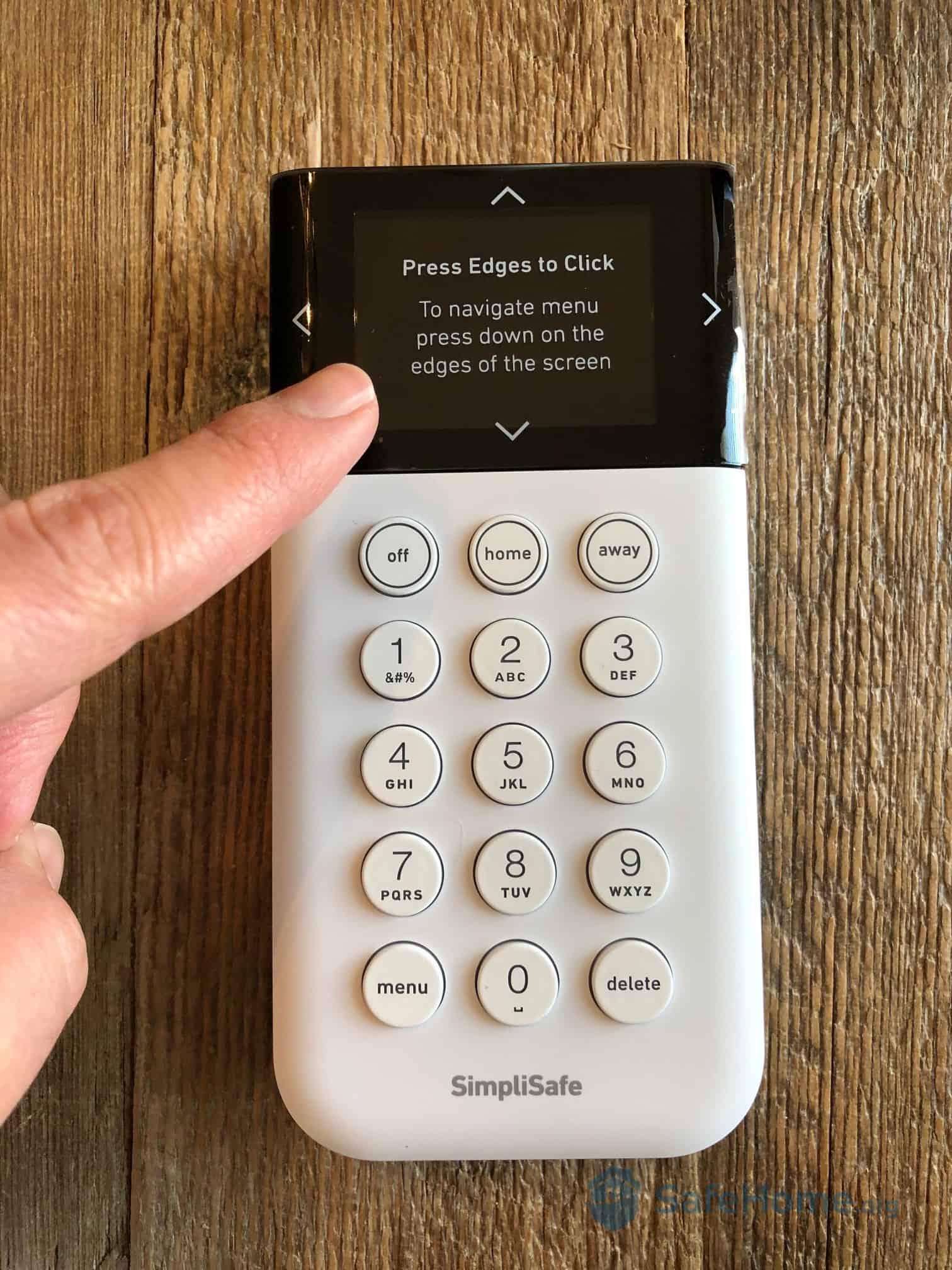
SimpliSafe Wireless Keypad Menu
What’s at Home?
Do you have kids? Pets? Valuables? Collectibles? What you have in your home may shape your security preferences. Motion detectors aren’t too useful when you have kids and nannies running around during the day — remember, motion sensors are most useful when you’re out of town — but cameras that will allow you to check in and monitor things while you’re at work might be useful. The best indoor cameras that we’ve found include Nest, Arlo, and Ring. You may want extra carbon monoxide or motion detectors in certain areas of your home, or a system that allows more home automation controls for things like your smart thermostat or smart lights.
Special Cases
Do you care for an elderly relative? Do you have a health condition, like diabetes or seizures, that might require immediate assistance? There are plenty of products on the market for special use cases. This isn’t something you need to obsess over — we’re not trying to inspire paranoia here — but you should definitely consider all the outcomes you want to protect against.
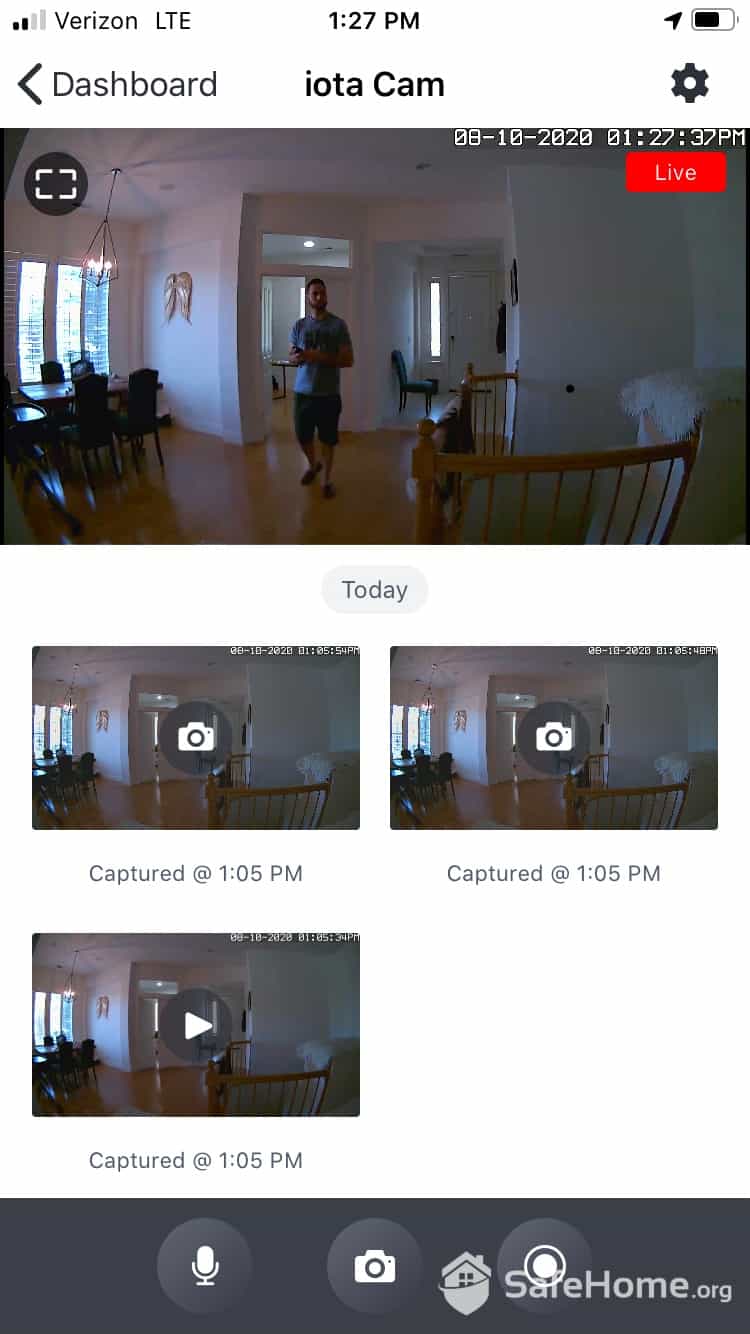
abode iota Cam Recordings
These elements are all important to consider, but as we’ve said before, every situation is different. Consider your needs, consider your unique property, and consider having a professional come to your home to give you a consultation. Many service providers, like Vivint and ADT, offer walk-throughs and hardware recommendations.
With that in mind, let’s discuss your provider options as well as how you’re going to manage your new home security system.
Home Security Providers
There are a multitude of home security system providers out there. They’ll all differ on available hardware, costs, and application. However, one of the most important distinctions you’ll see is whether or not the provider offers professional monitoring.
Like we said above, a home security system will only deter criminals unless it is professionally monitored. If you choose 24/7 professional monitoring, this service will immediately dispatch emergency services if something is amiss.
Pro Tip: Having professional monitoring can also help you cut down on instances of false alarms. There’s nothing quite as embarrassing as having to tell a police officer you forgot your disarm code. If you’re looking for a great, professionally monitored alarm system, check out our Cove home security system breakdown.
Now, this service will cost you. Depending on what you’re looking to monitor, expect to pay anywhere between $10 and $60 per month. If that’s not in your budget, it’s perfectly acceptable to monitor your own system and avoid the monthly payment. Although some people believe the peace of mind offered by professional monitoring is invaluable, we see benefits to both monitored and unmonitored systems.
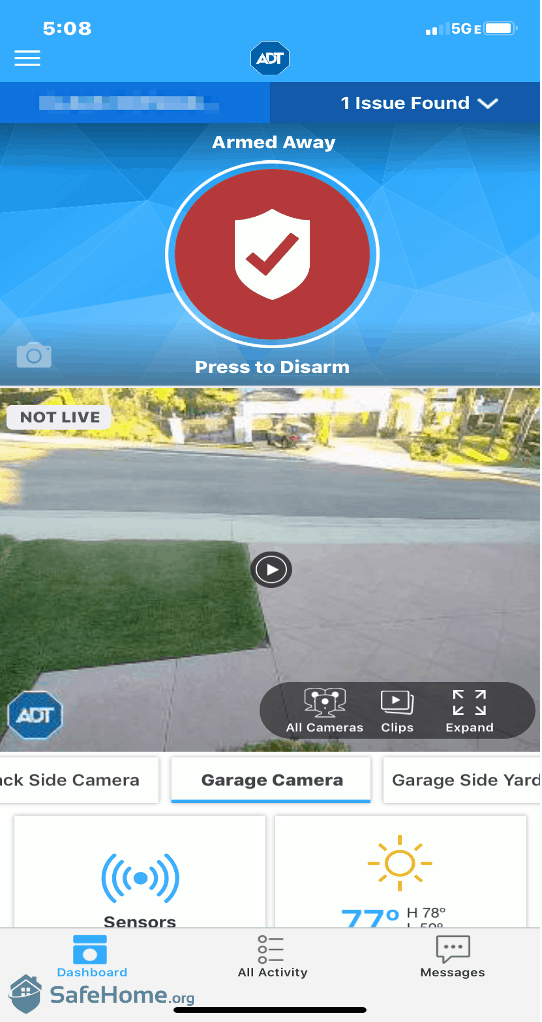
ADT App Camera View
Once you’ve decided on how you’re going to monitor your system, you’re going to need to control it. There are several ways to accomplish this, which we’ll discuss below.
Management: Keypads, Control Panels, and Apps
Almost every home security provider will offer some kind of setup for managing your security system. This is where you’ll arm and disarm the system, deactivate false alarms, view security camera footage, and check activity logs.
Many traditional security systems make use of a keypad or touchscreen control panel, which is generally installed inside your home near your main point of entry. This makes it easy to arm or disarm the alarm.
That said, many modern systems offer mobile apps that convert your smartphone into your digital command center. Some of the best mobile security apps in the game include those from Vivint, ADT, and Frontpoint.
While there are pros and cons to each type of system, it’s important to understand your options. If you’re looking for a system that can be controlled by your phone, you might also be interested in integrating your security system into a greater smart home system.
Smart Home Connectivity
Home security systems are getting smarter. Many now use wireless connections to keep you up to date through apps and keep your security hardware online and functional. Since so many modern systems feature network connectivity, it makes sense that some can play nice with — or even include — connected home devices that don’t have much to do with security at all.
A lot of modern home security solutions now include smart home features, like the ability to turn your lights on and off from afar, lock and unlock doors remotely, and adjust your thermostat from your phone. While these functions don’t necessarily have security implications, they do add convenience.
Pro Tip: The more connections you have, the more vulnerable your network becomes to cybercrime. If you’re setting up a smart home, make sure you protect yourself with a virtual private network.
Now that you have a pretty good understanding of what a security system looks like and what you’re likely to need, we can discuss the elements that make one system better than another. A lot of these have to do with preference, but some elements are objectively superior.
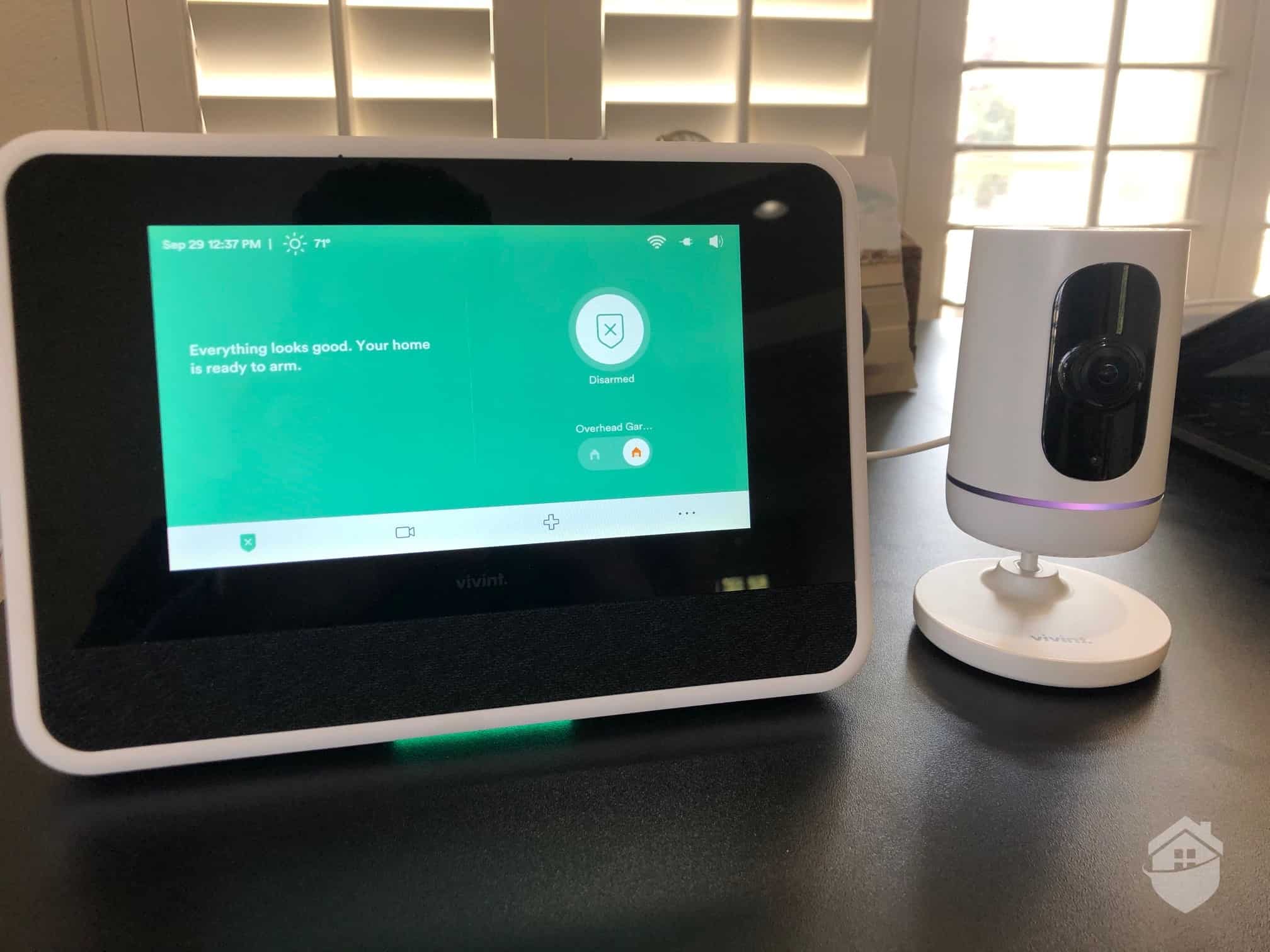
Vivint Smart Hub and Ping Indoor Camera
What Differentiates Security Systems?
Virtually all home security systems offer intruder sensors, monitoring capacity, and in-home alarms. Most offer the other devices we covered above, either in established home security bundles or as add-ons. So what’s the difference? What sets some systems apart? There are a few distinctions to not.
Wireless versus hardwired: One of the most important distinctions between different security systems is found in how they stay connected. The wired-versus-wireless distinction applies to both connected sensors and the connection between your system and the company monitoring it. And which wires are used matters, too; some older systems rely on landline phone lines, for instance, to reach the monitoring service. That said, if you don’t live near a city, you might consider one of the hardwired systems found in our guide to the best rural home security systems.
It’s important to note that wireless is the way of the future (and the present, for that matter). We recommend wireless home security systems in 90 percent of cases. The fact is, wireless systems are easier to set up, which you can often do yourself in a matter of minutes, which brings us to our next point.
Professional versus DIY installation: Depending on which system you choose, you may be setting up and connecting sensors and control panels yourself. If you’re not that handy, though, check out our list of the best home security systems with professional installation.
As you might expect, the top DIY wireless security systems are simple to install. Generally speaking, with this type of system, you won’t have to worry about drilling holes in your wall or soldering wires to get your new system up and running. Still, as you shop, you may want to consider your tech-savviness and your willingness to put in the time to get things up and running.
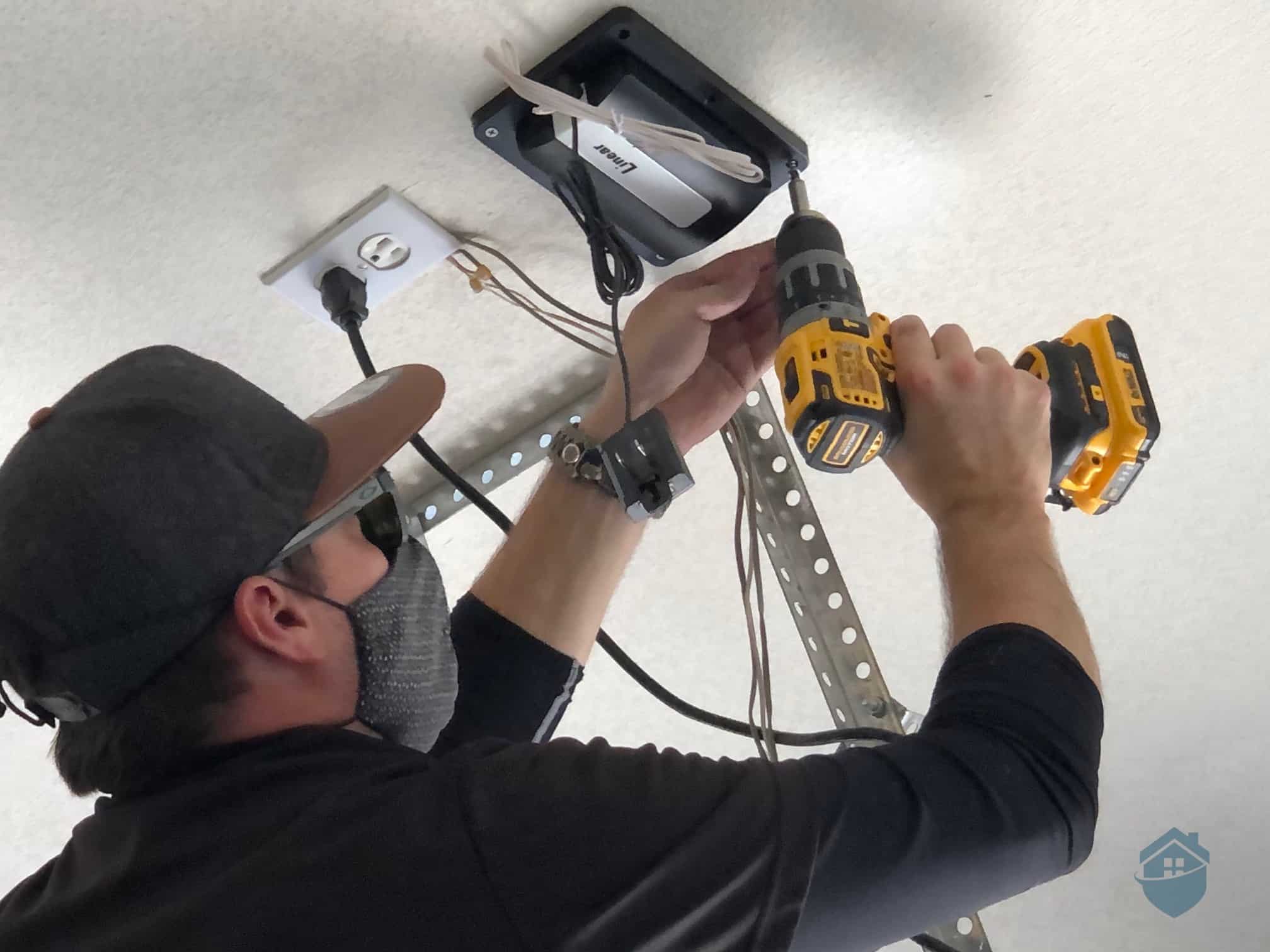
Don, the Vivint Installation Technician, installing our Smart Garage Door Opener
Self-monitoring options: As we mentioned above, you can expect to pay a monthly fee to have your security system provider monitor your system’s sensors. But some systems also give you powerful options to monitor things yourself.
You can also, of course, set up some self-monitoring options on your own. You don’t need a home security contract to buy a webcam and set up a security monitoring system of your own.
Prices and contracts: Ah yes, the ultimate differentiating factor: price!
Depending on which security system you choose, you may pay different prices for hardware, installation, and monthly monitoring services. Since each case is unique, it’s difficult for us to predict what it might cost you. Typically, though, you can expect to pay hundreds of dollars if you’re purchasing and assembling a comprehensive home security system from scratch. If this sounds a little steep, there are more affordable options available. Check out our guide to the best affordable security systems for more information.
For a more clear understanding of what you’re looking at price-wise, here’s a quick rundown of our favorite systems and their starting costs. Keep in mind, though, that these are base prices. The more hardware you add, the more you’ll spend.
Home Security Costs
| System | Price (starting at) |
|---|---|
| Vivint Smart Home | $599 |
| ADT Security | $99* |
| SimpliSafe Home Security | $189 |
| Cove Security | $130 |
| Brinks Home Security | $399 |
* Including $25 activation fee
And then there’s the contract. A typical home security contract will lock you in for three years of service, but some companies require a longer commitment. Others forgo long-term contracts entirely and let you subscribe month to month. Most companies that do this, though, require that you pay the equipment in full up-front, so there'll be a higher upfront cost.
That's about it. Now that you have all the information you need, it’s time to start shopping around for the right home security solution for your specific situation. Before you go, though, we have one last resource for you.
There are a lot of factors to consider as you choose a security system, but we can help you narrow things down. Our security system comparison tool allows you to plug in your information and let our expert findings and experience guide you in making the best decision for your situation.
Making Your Decision
There’s certainly a lot to consider when choosing a security system for your home. Which hardware will you need? Can you install it yourself? Do you want it monitored professionally? Are you going wireless? How much are you willing to spend? All of these questions need to be answered to narrow things down, and we understand if the process seems daunting.
It’s a critically important process, though. Break-ins, home invasions, and burglaries are some of the worst things you can go through in this life. They’re deeply unsettling, and the physical, emotional, and economic trauma of going through such an ordeal can last for years.
Stay smart and stay safe!
